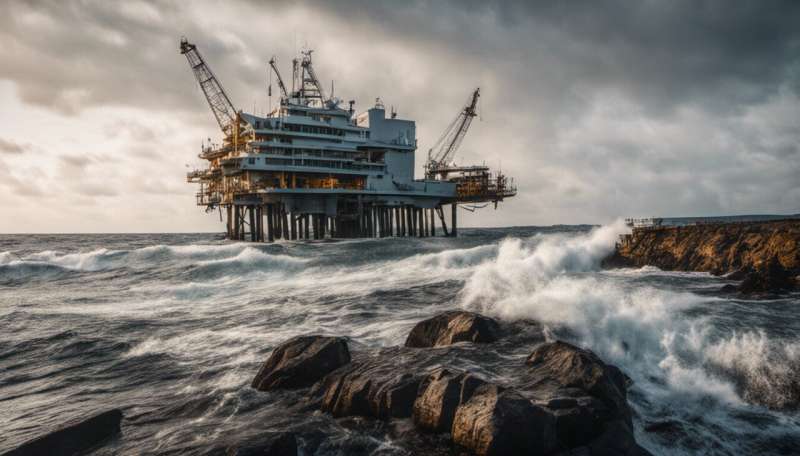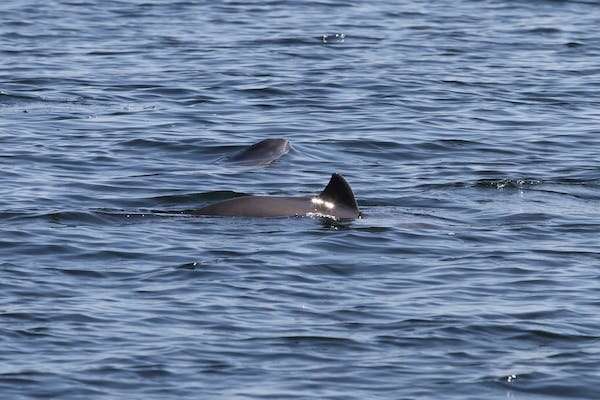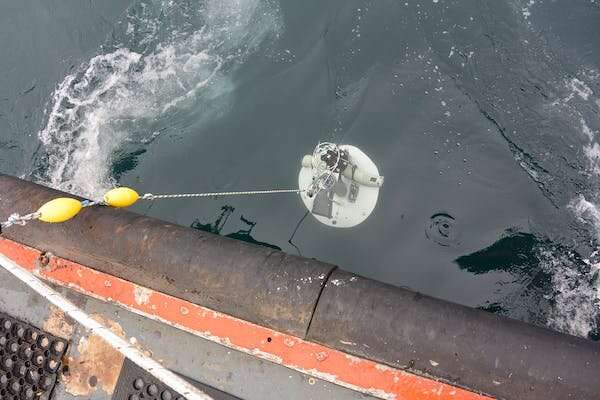This article has been reviewed according to Science X's editorial process and policies. Editors have highlighted the following attributes while ensuring the content's credibility:
fact-checked
trusted source
written by researcher(s)
proofread
Offshore wind farm construction is noisy—but gadgets used to protect marine mammals are working

The European Union had 14.6 gigawatts (GW) of offshore wind energy installed in 2021, and this is projected to increase by at least 25 times in the next ten years. While an expanding renewable energy sector is necessary to replace fossil fuels and slow climate change, it must not come at a cost to Earth's embattled wildlife.
To date, most offshore wind turbines have been built using fixed foundations, typically steel piles that are driven into the seabed with large hydraulic hammers—often very large ones. The noise that pile-driving generates can be heard tens of kilometers from the source as short and sharp concussions like gunfire.
Sound travels much more efficiently in water than in air. Marine mammals like whales and porpoises use it to communicate over long distances, sense the environment and locate prey. This dependence on sound makes marine mammals particularly vulnerable to the effects of man-made noise, including the noisy construction of offshore wind farms. Pile-driving can deafen, injure or even kill marine mammals at close range.
The harbor porpoise is the smallest and most common species of cetacean in the North Sea, where EU countries hope to generate 150 GW of offshore wind energy by 2050. Like bats, these relatives of whales and dolphins emit clicks to echolocate almost continuously. This helps them find and identify objects, including food. Acoustic deterrents, small devices which emit pulses of sound, are used to scare marine mammals away from where wind farms are being built to protect them from the noise generated by pile-driving. Until recently though, no one was sure how well these deterrents worked.

My colleagues at the University of Aberdeen's Lighthouse Field Station and the University of St. Andrews' Sea Mammal Research Unit developed a portable acoustic recorder which can detect the movements of harbor porpoises. Using an array of these recorders during pile-driving at an offshore wind farm in north-east Scotland, we showed that acoustic deterrents work—porpoises swim directly away from the pulses of sound, ameliorating the most severe impacts of construction at sea.
Fighting noise with noise
A range of measures have been deployed to minimize the harm from offshore wind farm construction. Acoustic deterrent devices, which are switched on before pile-driving begins, are supposed to empty the sea of marine mammals tens to hundreds of meters around the construction site, where the noise is expected to be most damaging. These electronic devices were originally developed for use in the aquaculture industry to deter seals from fish farms.
Despite experimental trials, there is limited evidence to show how well acoustic deterrents work during construction. This is, at least in part, due to the difficulties of working in the marine environment, but also because of the challenges involved in studying animals that are highly mobile, relatively rare and live most of their lives underwater and out of sight. These factors make it very hard to observe how marine mammals react to particular noises or disturbances. Fortunately, we were able to turn the dependence of harbor porpoises on sound to our advantage.

Recent advances in passive acoustic monitoring meant that we could use a sound recorder connected to a small cluster of underwater microphones, called hydrophones, to study porpoise movements. By measuring tiny differences in the time of arrival of porpoise echolocation clicks at the four hydrophones, we identified the direction from which they were echolocating. The harbor porpoise's echolocation beam is narrow and forward-facing, and so from these findings, we were able to determine the direction in which they were swimming.
We found that when acoustic deterrents were in use, the clicks of harbor porpoises we detected indicated they were swimming directly away from the construction site. This proves that acoustic deterrent devices can make offshore wind farm construction safer.
We did detect responses among harbor porpoises up to 7 km from the construction site, suggesting that these deterrent devices may be almost too good at their job. Such a long-distance effect could displace animals from important feeding sites and highlights the importance of a balance between preventing injuries and minimizing disturbance.
Our portable acoustic recorder can now improve protection for marine mammals by more accurately determining how they respond to disturbance across a wide range of habitats. It will also allow researchers to gauge the effectiveness of measures used to minimize disturbance during wind farm construction or other activities, including animal deterrents and systems for reducing the noise produced by piling at construction sites.
Provided by The Conversation
This article is republished from The Conversation under a Creative Commons license. Read the original article.![]()


















